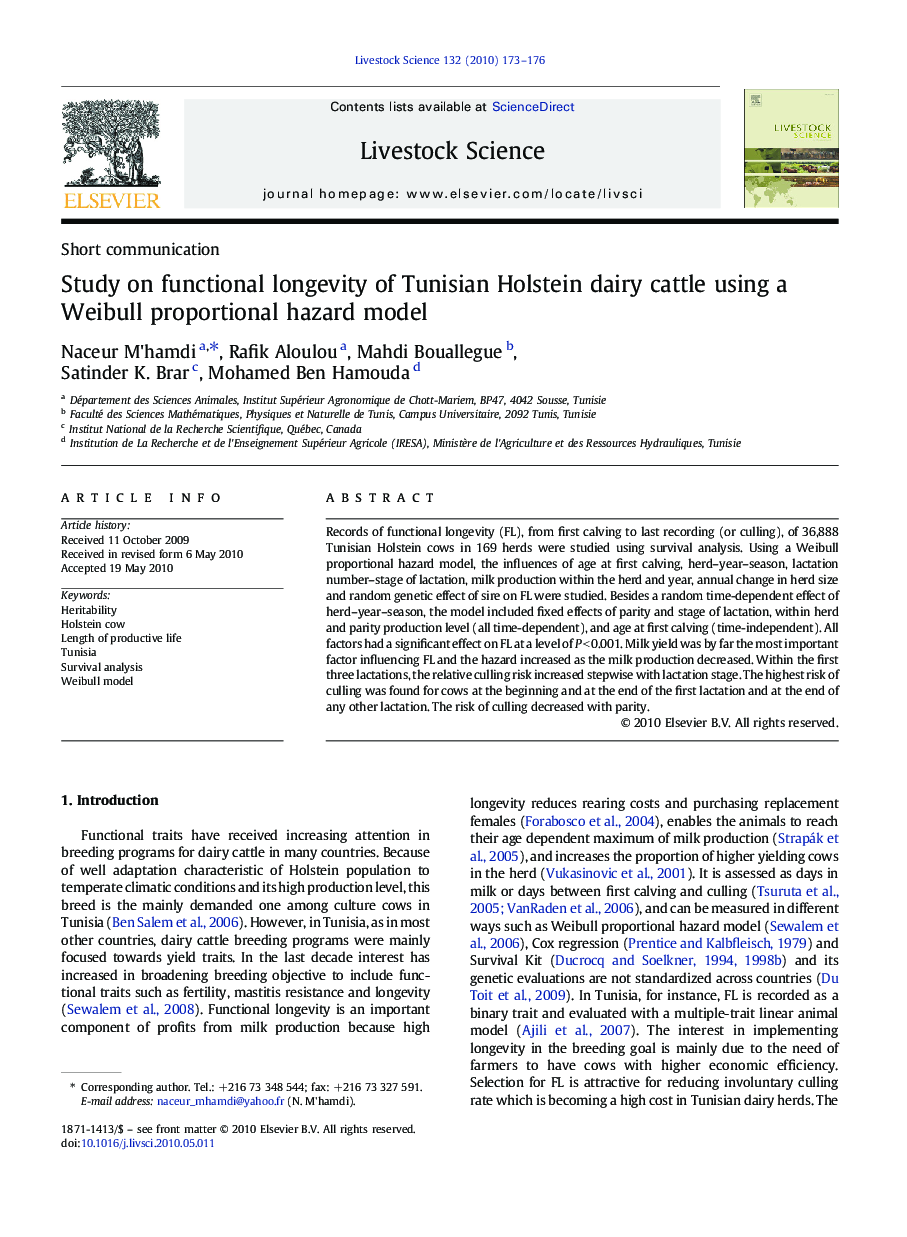| Article ID | Journal | Published Year | Pages | File Type |
|---|---|---|---|---|
| 2447768 | Livestock Science | 2010 | 4 Pages |
Records of functional longevity (FL), from first calving to last recording (or culling), of 36,888 Tunisian Holstein cows in 169 herds were studied using survival analysis. Using a Weibull proportional hazard model, the influences of age at first calving, herd–year–season, lactation number–stage of lactation, milk production within the herd and year, annual change in herd size and random genetic effect of sire on FL were studied. Besides a random time-dependent effect of herd–year–season, the model included fixed effects of parity and stage of lactation, within herd and parity production level (all time-dependent), and age at first calving (time-independent). All factors had a significant effect on FL at a level of P < 0.001. Milk yield was by far the most important factor influencing FL and the hazard increased as the milk production decreased. Within the first three lactations, the relative culling risk increased stepwise with lactation stage. The highest risk of culling was found for cows at the beginning and at the end of the first lactation and at the end of any other lactation. The risk of culling decreased with parity.
